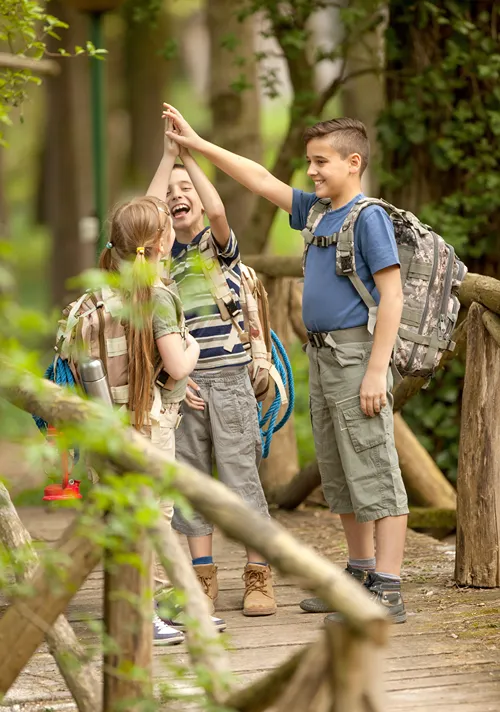Should Parents Take Child Care Training Courses?
Parenting is one of life’s most rewarding experiences, yet it has unique challenges. Every parent’s desire is to provide the best care for their children, ensuring their physical, emotional, and social development. In this context, the concept of childcare education has gained significant attention.
These courses, often associated with professional caregivers, are now becoming popular for parents seeking to improve their skills and knowledge. This article explores the benefits, challenges, and relevance of childcare training in your parenting journey.
Understanding Childcare Training
Training in childcare encompasses a range of educational programs designed to teach individuals the skills necessary to care for children. While traditionally aimed at caregivers, nannies, and daycare workers, many programs are also tailored for parents, offering valuable insights into raising children. These caregiving courses often cover topics such as:
- Child development stages.
- Health and safety measures.
- Nutrition and meal planning.
- Behavior management techniques.
- Emergency response and first aid.
Benefits of Childcare Training for Parents
There are certain advantages of learning childcare for you as a parent. Going through this training program helps you in the following ways:
Enhanced Knowledge of Child Development:
One of the primary benefits of training yourself in childcare is a deeper understanding of child development. You will learn about cognitive, emotional, and physical milestones, enabling you to support your child’s growth effectively. For instance, understanding when a child should start speaking or walking helps you identify potential developmental delays and seek timely intervention.
1. Improved Health and Safety Practices:
Childcare courses emphasize health and safety protocols, which are crucial for a child’s well-being. You will be educated on topics like baby-proofing the home, preventing common childhood injuries, and recognizing signs of illnesses. Additionally, many courses include first aid and CPR training, empowering you to handle emergencies confidently.
2. Strengthened Parent-Child Relationships:
You will gain insights into effective communication and behavior management strategies through parenting classes. These skills foster stronger bonds with your children by promoting positive interactions and reducing conflicts. Learning techniques such as active listening and positive reinforcement can significantly enhance family dynamics.
3. Confidence in Parenting Decisions:
Raising a child involves countless decisions, from choosing the proper discipline methods to establishing routines. Training provides you with evidence-based knowledge, helping you make informed choices. This confidence reduces parenting stress and enhances your overall experience.
4. Adaptability to Modern Parenting Challenges:
The world is evolving rapidly, and so are the challenges of parenting. Issues like screen time management, social media exposure, and cyberbullying are unique to this generation. The training courses often address these modern concerns, equipping you with tools to navigate them effectively.
Challenges of Childcare Training for Parents
While the benefits of training in childcare are clear, you can face challenges while pursuing these courses. Keep the following difficulties in mind to ensure a smooth learning outcome:
1. Time Constraints:
Busy schedules can make it difficult for you to commit to training sessions. You can address this challenge by having online courses and self-paced modules that will allow you to learn conveniently.
2. Cost:
Some programs can be expensive, potentially deterring parents with limited budgets. You can make training more accessible using subsidized or free programs as they encourage participation among parents from diverse economic backgrounds.
3. Accessibility:
If you reside in rural or remote areas, you will struggle to find nearby training centers. You can gain wider reach and expand access to training programs in childcare in rural areas through mobile units or virtual platforms as they ensure inclusivity.
4. Perceived Stigma:
Some of you may feel that seeking training implies inadequacy in your parenting skills, leading to hesitation in enrolling. Embrace community support and promote childcare training. It is a proactive step rather than a sign of inadequacy to reduce stigma.
Alternatives to Formal Training
For parents who cannot attend formal training courses, there are alternative ways to enhance their parenting skills. You can check the following alternatives to gain essential skills in childcare.
- Parenting Books and Blogs: Numerous resources provide valuable tips and insights on childcare.
- Workshops and Seminars: Local community centers often host free or low-cost parenting workshops.
- Support Groups: Engaging with other parents through support groups allows for shared learning and experiences.
- Online Resources: Websites, videos, and webinars on parenting topics are widely available and often free.
Conclusion
Parents often need assistance while caring for their young ones. Childcare courses offer invaluable knowledge and skills that empower parents to provide the best possible care for their children. While challenges such as time and cost exist, the benefits, like improved health and safety practices, stronger parent-child relationships, and increased confidence, outweigh the drawbacks significantly. Thus, you can enhance your abilities and contribute to the holistic development of your children by learning about childcare.









